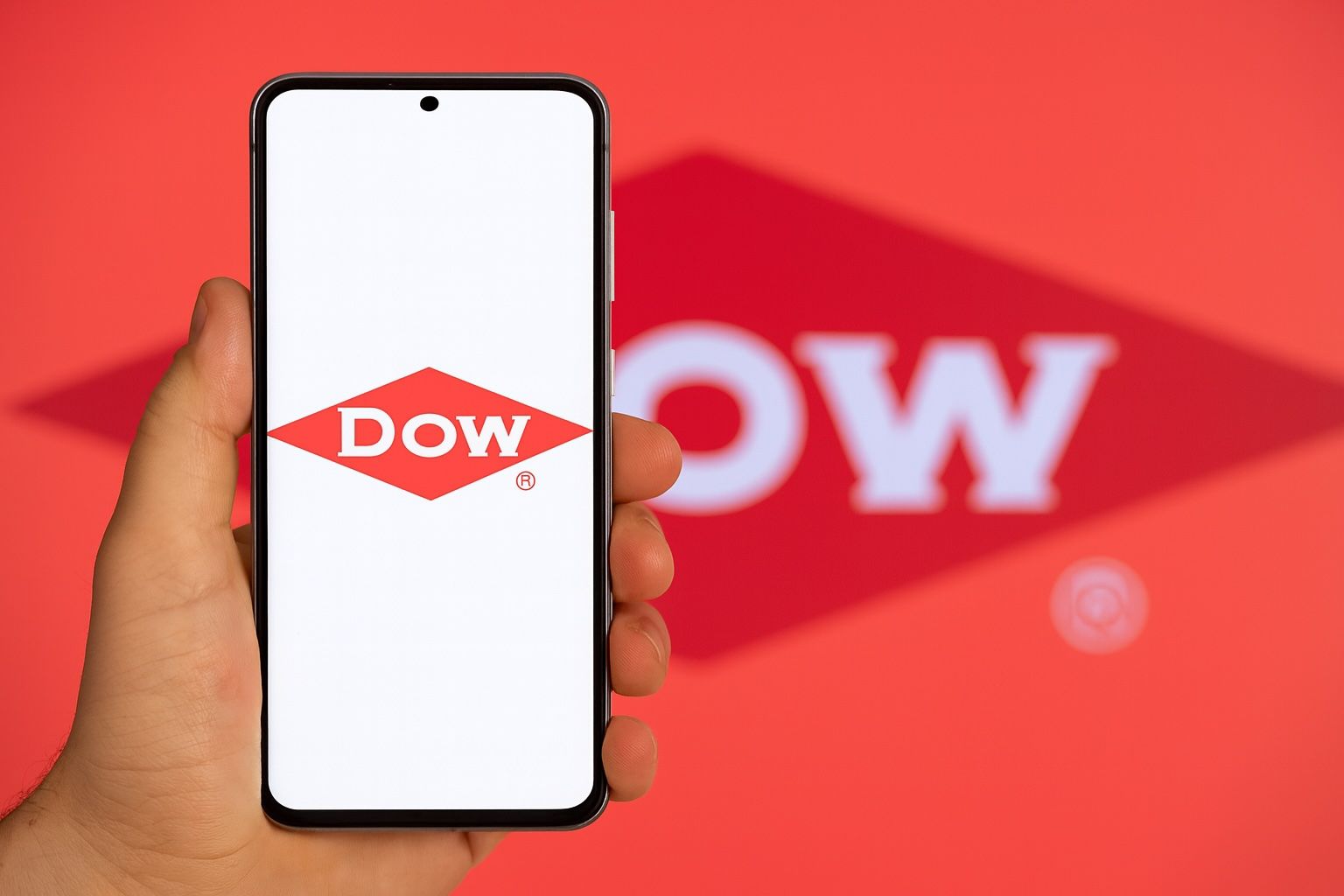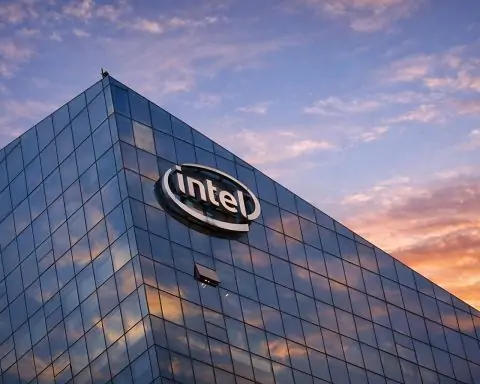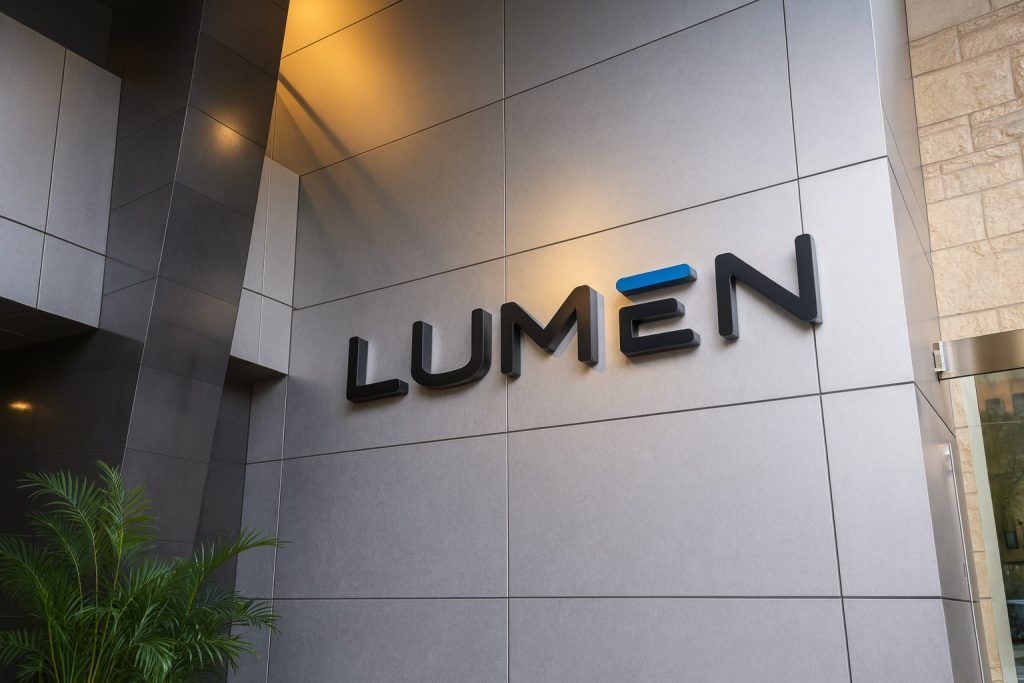Key Facts: Dow Inc. (NYSE: DOW) stock surged on Oct. 23 after the company’s Q3 report, trading around the mid-$20s (around $23.5 by mid-session) – roughly 8–10% higher on the day [1] [2]. Over the past week the stock jumped sharply amid heavy volatility. The company reported a smaller-than-expected third-quarter adjusted loss (–$0.19 per share vs. –$0.29 est.) on sales of about $9.97 billion, narrowly missing revenue forecasts [3] [4]. This beat helped lift shares, though sales fell 8% year-on-year due to softer chemicals pricing. Dow’s annualized dividend was recently cut in half (to $0.35 quarterly from $0.70) and it now yields roughly 5–6% [5] [6], a move that prompted investor lawsuits over prior guidance [7] [8]. Industry headwinds remain, however: tariffs and Chinese overcapacity are pressuring margins across chemicals [9] [10]. Peers like DuPont and LyondellBasell have also seen weak demand, but Dow’s extensive U.S. Gulf Coast assets and cost-cutting efforts help offset price drops [11] [12]. Wall Street’s consensus view is cautious – analysts rate the stock a “Hold” on average with a 12‑month target around the mid‑$20s [13]. Potential catalysts include any recovery in global manufacturing, easing trade frictions, and rate cuts to spur demand (as management noted) [14] [15].
Strong Q3 Surprise and Stock Reaction: On Oct. 23, Dow announced its third-quarter results, reporting an adjusted loss of 19 cents per share, better than the 29-cent loss analysts expected [16] [17]. Sales of $9.97 billion were slightly below forecasts, reflecting an 8% year-on-year drop in selling prices and volumes. Still, new Gulf Coast operations and aggressive cost cuts helped improve margins. Dow’s stock jumped over 10% in morning trading, as Bloomberg notes that “improved volumes in the industrial unit helped reduce its loss from the previous quarter more than analysts expected” [18] [19]. This rally partly reversed earlier declines – year-to-date Dow shares were down roughly 45–46% [20], hitting multi-year lows in recent months. For context, the S&P 500 is up about 10-15% this year, so Dow has sharply underperformed its peers.
In discussing the quarter, CEO Jim Fitterling highlighted that Dow “delivered sequential earnings and cash flow improvement despite continued pressure across our industry,” noting that teams engaged with governments to keep product moving and that “resilient demand” emerged from new U.S. assets [21] [22]. CFO Jeff Tate added that recent monetary policy shifts and anticipated rate cuts “could start to more positively influence demand,” though he cautioned that pricing pressure from Asian exports was still a risk [23]. Overall, Dow management raised guidance that cost reductions and Gulf Coast capacity would offset the downturn, achieving over half of a planned $6.5 billion near-term savings program (including $1 billion of capital spending cuts) [24] [25]. The net result was a much smaller loss than feared, which analysts (and TS2’s reporters) viewed as a “surprise beat” amid a tough environment [26] [27].
Dividend Cut and Investor Scrutiny: A major recent development has been Dow’s drastic cut to its dividend. In late July 2025, Dow announced a 50% reduction in its quarterly payout, lowering it to $0.35 per share [28] [29]. This was aimed at “aligning the payout size to provide additional financial flexibility” amid prolonged weakness [30]. The dividend halving proved shocking: shares tumbled more than $5 on the day of the announcement [31]. Many analysts and institutional investors had not anticipated such a move (Dow’s dividend yield had briefly approached 10%), and now the stock yields roughly 6% at current prices [32]. The cut has drawn legal action: several class-action lawsuits filed in October charge that Dow misled investors about the strength of its business and the durability of its dividend prior to the cut [33] [34]. (Dow has said nothing publicly beyond the regulatory filings.)
Despite this turmoil, the reduced payout substantially lowers Dow’s cash outflow and positions it to preserve liquidity through the downturn. Management has stressed that it remains committed to returning excess cash to shareholders once the outlook improves. In their Q3 presentation, management reaffirmed the goal of delivering $6.5 billion in savings, with over half already secured via capex cuts and efficiency initiatives [35] [36].
Market and Industry Context: Dow’s struggles reflect broad chemical-sector trends. Global capacity gluts (especially in ethylene and derivatives) and tariff-driven distortions have kept prices weak. Reuters highlights that all major U.S. chemical companies face tepid industrial demand and an export surplus from China that is “squeezing margins and sentiment across the sector” [37] [38]. In early September, Dow noted an oversupply of ethylene and plastics, and even a brief slide in polyethylene prices due to tariff uncertainties [39] [40]. This aligns with TS2.tech’s industry report that leading chemical giants like Dow are now aggressively pivoting toward higher-growth “green chemistry” markets (bio-based plastics, recycling, etc.) as sustainability pressures reshape the business [41]. Those long-term trends may eventually benefit Dow, but in the near term petrochemical oversupply and geopolitical tariffs remain the dominant drags.
Domestically, one positive offset has been new low-cost U.S. capacity. Dow in 2024 completed several Gulf Coast expansions (polyethylene and alkoxylation plants) that are now boosting volumes at higher margins. Management repeatedly cites the “cost-advantaged” nature of its U.S. assets [42] [43]. Indeed, Bloomberg notes that improved volumes in Dow’s industrial-chemicals segments helped narrow losses more than expected [44]. Dow also sold a stake in an infrastructure-chemicals venture (to Macquarie for $540M) this year to sharpen its focus on core operations [45]. And in early October a contained fire at its Freeport, Texas plant (Plant B) had little impact on production [46], a sign that operations have thus far been resilient.
Peer Comparison: Compared to peers, Dow’s stock has been among the weakest performers in 2025. For example, Nasdaq reports that DuPont (chemical/conglomerate) and other specialty peers are only modestly down this year, whereas Dow is off nearly half [47]. LyondellBasell and Westlake Chemical have also seen double-digit declines, but Dow’s drop was especially steep due to its more mixed portfolio and dividend shock. Like Dow, BASF (Europe’s largest chemical maker) recently cut guidance amid weak global growth [48]. However, the sell-off likely overshoots some fundamentals: Dow trades around $23–24 (as of Oct. 23) versus 52-week highs near $52 [49] [50]. Even after the gains on Oct. 23, analysts point out Dow is trading at roughly one-third of the near-term fair value estimated by some models.
Analyst Outlook and Catalysts: Street analysts are mixed. The consensus rating is a “Hold” with a 12‑month price target in the mid-$20s [51] (about 14% above current levels). This implies limited near-term upside, reflecting caution that the industry downturn may persist into 2026. Some, however, see upside if conditions improve. A few brokerage notes (e.g. Seeking Alpha, Benzinga) argue that Dow’s earnings power could rebound if global manufacturing awakens or U.S. tariffs are eased next year. Potential catalysts include any broad-based recovery in auto and construction (major consumers of plastics), the end of tariff overhangs if trade policies soften, and stimulus-driven demand growth overseas. Notably, CFO Tate mentioned that upcoming central bank rate cuts could “more positively influence demand” [52] – hinting that the peak of monetary tightening might be behind us.
In summary, Dow’s recent earnings surprise gave a short-term boost to the stock [53] [54], but significant risks remain. The company is actively reducing costs and focusing on its advantages (new U.S. plants, portfolio mix), which could pay off if the economic cycle stabilizes. However, investors remain wary: Dow’s dividend stability was shaken this year and legal probes loom [55]. For now, the stock appears to be recovering from oversold levels, but it will likely stay volatile until there is clearer evidence of stronger chemical demand or easing trade frictions. Analysts will watch closely Dow’s Q4 outlook and any further management commentary for signs of a turnaround.
Sources: Dow Inc. SEC filings and press releases; Reuters (company news and analysis) [56] [57] [58]; TS2.tech industry analysis [59]; Bloomberg market reports [60]; Nasdaq.com financial data [61]; Dow Investor Relations historical data [62]; local Michigan news (Midland Daily News on lawsuits) [63]; financial data aggregators (StockAnalysis) [64].
References
1. www.investing.com, 2. www.bloomberg.com, 3. www.reuters.com, 4. www.nasdaq.com, 5. investors.dow.com, 6. stockanalysis.com, 7. www.ourmidland.com, 8. www.ourmidland.com, 9. www.reuters.com, 10. www.reuters.com, 11. www.reuters.com, 12. ts2.tech, 13. stockanalysis.com, 14. www.reuters.com, 15. www.ourmidland.com, 16. www.reuters.com, 17. www.nasdaq.com, 18. www.bloomberg.com, 19. www.investing.com, 20. www.nasdaq.com, 21. investors.dow.com, 22. www.reuters.com, 23. www.reuters.com, 24. www.reuters.com, 25. investors.dow.com, 26. www.reuters.com, 27. www.bloomberg.com, 28. investors.dow.com, 29. www.reuters.com, 30. www.reuters.com, 31. www.ourmidland.com, 32. stockanalysis.com, 33. www.ourmidland.com, 34. www.globenewswire.com, 35. www.reuters.com, 36. investors.dow.com, 37. www.reuters.com, 38. www.reuters.com, 39. www.reuters.com, 40. www.reuters.com, 41. ts2.tech, 42. www.reuters.com, 43. www.ourmidland.com, 44. www.bloomberg.com, 45. www.reuters.com, 46. www.reuters.com, 47. www.nasdaq.com, 48. www.reuters.com, 49. www.investing.com, 50. stockanalysis.com, 51. stockanalysis.com, 52. www.reuters.com, 53. www.reuters.com, 54. www.bloomberg.com, 55. www.ourmidland.com, 56. www.reuters.com, 57. www.reuters.com, 58. www.reuters.com, 59. ts2.tech, 60. www.bloomberg.com, 61. www.nasdaq.com, 62. investors.dow.com, 63. www.ourmidland.com, 64. stockanalysis.com







